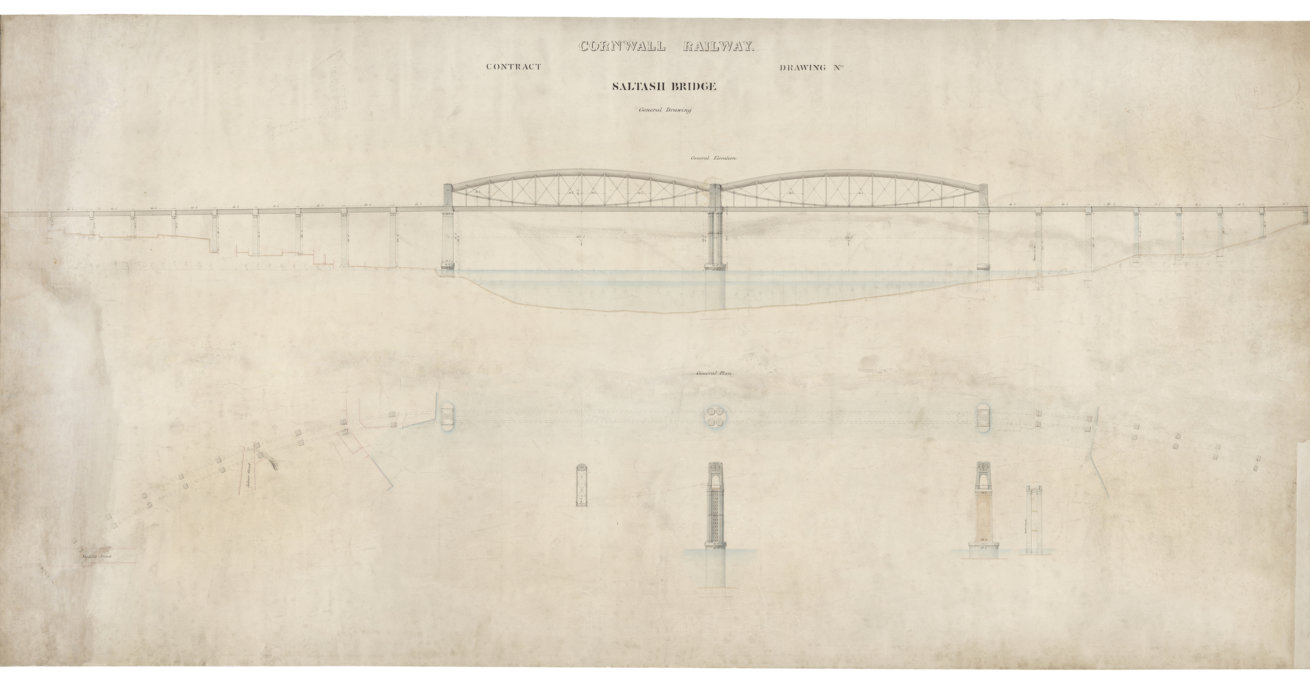The Network Rail archive is the custodian of a vast collection of historic documents and plans relating to today’s railway infrastructure.
It represents the development of the most significant structures, engineers and innovation on the railway from the 19th century to the present.
Each month we will delve into the archive to shine a light on the development of our network through the ages.
April: the Royal Albert Bridge
Ten years ago, we gave one of Isambard Kingdom Brunel’s most famous structures a new lease of life.
Its revamp came after the Royal Albert Bridge – which crosses the River Tamar between Plymouth and Saltash, Cornwall – had spent 150 years carrying almost a billion tonnes of rail traffic.

We refurbished the bridge’s two main spans and, three years earlier, had unveiled Brunel’s name on the bridge – which had remained hidden for decades – to celebrate the bicentenary of Brunel’s birth.
Ian Frostick, a route civil engineer at Network Rail, said at the time: “The 150 years anniversary is a testament to Brunel’s achievements and to the industry’s commitment to this vital rail link.
“It is a complex job that requires careful consideration, particularly on safety, operations and heritage issues…”
- The bridge was covered in 30 coats of paint; research found the original colour could have been brown.
- It was first repainted grey in 1911. Its original colour was never recorded, leaving a gap in the history books.
- The Royal Albert Bridge was completed in 1859 and serves as a vital rail link to and from Cornwall.
- The bridge had to be supported 80 feet above water level, with a giant cylinder floated out and sunk onto the rock. The bridge’s two 455-foot main spans were built on the shore, floated into position, then jacked up by a few feet per day until they reached the right level.
Read more
- From the archive: the Royal Border Bridge
- From the archive: Glasgow Queen Street
- From the archive: London Charing Cross
- Step back in time… and inside Britain’s busiest signal box
- Network Rail graduates step into history
- Our signalling heritage
- Preserving railway history: five things saved by Network Rail
- Incredible Stephenson railway history rediscovered




